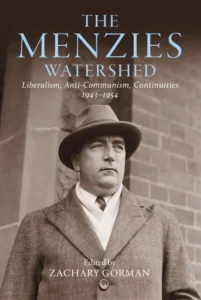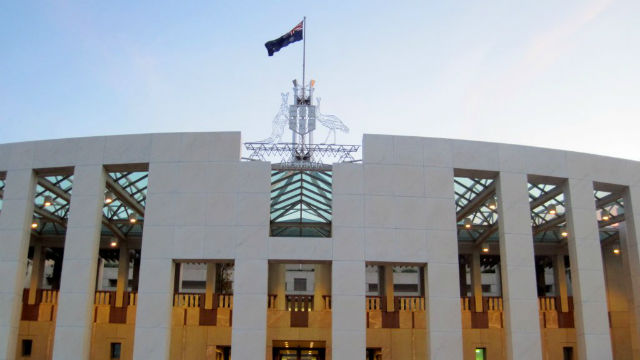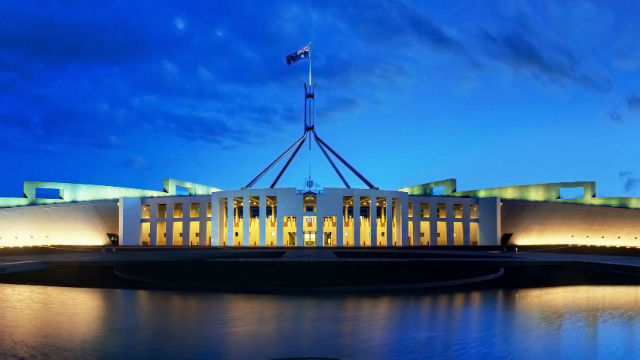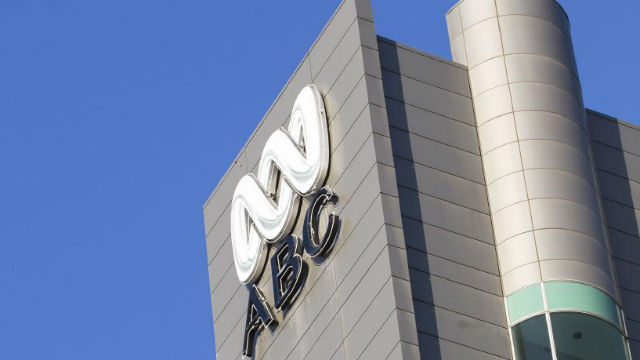
Tom Switzer’s chapter in The Menzies Watershed: Liberalism, Anti-communism, Continuities 1943–1954 (Melbourne University Press)
Introduction
At the 1949 federal election, Robert Menzies campaigned on a policy platform which supported free enterprise and freedom of choice, and which conversely opposed socialism and state ownership. This rhetorical framing helped Menzies and his Liberal Party distinguish themselves from the Labor government, which had been in power since 1941 and had frequently been found advocating for an increased role for the state. However, despite the lines of philosophical cleavage being quite clear during the election, after 1949 the incoming prime minister arguably left unchanged many of the achievements of Ben Chifley’s interventionist government.
Though Chifley’s government was relatively short-lived—from 1945 to 1949—its socio-economic achievements were stupendous: an emboldened welfare state, a development ethos, a larger immigration intake, the imposition of Keynesian demand management at the Treasury, and full employment, were all placed at the heart of government policy.
This proved an enduring settlement. Even though his election defeat in 1949 opened the way to a long period of Coalition governance, none of the prime ministers who succeeded Chifley—Menzies, Harold Holt, John McEwen, John Gorton, William McMahon, Gough Whitlam, Malcolm Fraser—challenged the core elements of this post-war system.
Menzies gave voice to the classical liberal philosophy of limited government based on competition and the widest freedom of individual choice. But he never set out to destroy the post-war economic policy consensus of high tariffs, centralised wage fixing and financial regulation. Some of his critics at the time lamented a fundamental mismatch between his rhetoric and the record.

But Menzies was a creature of his culture, and as Gregory Melleuish has observed, ‘cultures are created by people who put into place institutions that mould and shape the pathways of the next generation’.3 The Federation Settlement of 1901 created a protectionist culture that shaped generations of Australians. It’s not surprising, then, that Menzies’s early years in power were marked by certainty and predictability, qualities much appreciated after the Depression and World War II. Still, Menzies scored a great triumph for liberalism in 1949: the defeat of Chifley’s plans to introduce socialism in the form of bank nationalisation. (See Anne Henderson’s chapter.) Indeed, it is widely agreed among historians that Labor’s proposal presented an opportunity for Menzies to revive his floundering political career—as had their earlier attempts to greatly increase the power of the federal government via referendum.
At the time, the media’s conventional wisdom had written Menzies’s political obituary: after upsetting his colleagues, he had lost power in humiliating fashion during the war in 1941. ‘It was the most humiliating personal collapse in the history of federal politics in Australia,’ remarked biographer Allan Martin in 2001.
Then Menzies led the newly created Liberal Party to a massive election defeat at the 1946 election, and the popular slogan ‘You can’t win with Menzies’ came to haunt the former prime minister. Menzies told his mentor Owen Dixon that he had profound doubts about his political future. According to Martin, Menzies ‘knew he was the subject of dislike and hostility throughout the community and thought perhaps his party could not win under his leadership’. But Labor’s bank nationalisation changed the political circumstances, and Menzies exploited the opportunity.
In the lead-up to the December 1949 poll, Menzies launched a free enterprise campaign against Labor’s bank nationalisation law. ‘Australians are now called to a great battle to defend their freedoms against dictatorship at home,’ he declared. ‘A vote for Labor is a vote for socialism.’ Private banks were not safe if Labor were re-elected, because nationalisation was a direct link to the people’s private property rights.
Menzies warned of Labor’s goal of ‘socialism in our time’—that is, the establishment of the ‘master state’ where,
‘as in the monstrous totalitarian states which have disfigured the history of the 20th century, all free choice will have gone … In brief, socialism is in Australia an alien and deadly growth. We must destroy its political power and its mental and spiritual infection while there is still time … You cannot socialise the means of production without socialising men and women …
A resolute reduction in the burdens of government, and with it, in the rates of tax, will mean reduced costs of production.
Socialism, by placing its emphasis on State control, state management, the growth of departments, the notion that security is independent of individual effort, actually discourages production.’
Menzies was hardly alone in making the case against socialism. Between 1905 and 1906 George Reid had led a famous campaign warning Australians about the dangers of Labor’s ‘socialist tiger’, while in 1949 Country Party leader Artie Fadden cautioned the electorate: ‘If you choose the Labor Party, then your ballot paper will truly be your last will and testament, disposing in your own lifetime of your liberties and your property and condemning your children and your children’s children to the living death of socialist regimentation’.
Menzies’s ‘forgotten people’ theme, which he started championing in radio broadcasts from 1942, was a successful attempt to undermine Labor’s class-based politics and to broaden the centre-right’s image beyond that of representing private enterprise. Menzies’s message was directed at small-business people, professionals and migrants, appealing to the ‘ordinary’ people of the Australian suburbs whose aspiration focused on the family and home—or what Judith Brett has called the ‘moral middle class’.
Indeed, many Australians saw a potential threat to their own life implicit in the creation of a government-owned and controlled bank monopoly. As David Kemp has argued, in 1949 Menzies presented the Australian people with a clear choice between liberalism and individuality on the one hand and a monopolistic socialism, with its directed conformity on the other. As a result, he marked a direct link between capitalism and liberty, a link that Chifley and the Labor Party grossly underestimated.
The result on 10 December 1949 was a Liberal–Country Party Coalition victory by 51 per cent to 49 per cent after preferences. Labor retained control of the Senate, but with a 74–47 majority the Coalition held a commanding margin of power in the House of Representatives. To be sure, bank nationalisation was not the overriding issue at the election, but it contributed significantly to the defeat of the Chifley government.
Thanks to its subsequent consolidation, the 1949 election became the watershed poll in Australian history; the most important election in the history of non-Labor politics and in the history of the Liberal Party. According to Paul Kelly, the nationalisation matter represented three key lessons: that Labor best governed by focusing on middle-of-the-road brands of government intervention; that the public valued the economic and moral benefits of free enterprise; and that the nationalisation issue was exploited by Menzies not to repudiate government intervention and state power but to position himself as its most successful champion.
In other words, the ‘moderate’ Ben Chifley, as Labor partisans had dubbed him, had overreached, whereas the pro-free enterprise Robert Menzies was a ‘cautious reformer’, as prominent journalist Alan Reid called him, who Kelly credits with taking ‘to its zenith the old Labor ideal of civilising capitalism’. As a result, it was Menzies, not Chifley, who consolidated and gave expression to the enduring post-war legacy—an Australia of low unemployment, consistent growth, social stability, high immigration, and the more distinctly Menzian achievement of high home ownership. The World War II generation, represented by the ex-servicemen, had gone Liberal not Labor. The great Australian middle class emerged from the battering it had received in the Great Depression and through wartime taxation, to greatly expand throughout the 1950s. And the economy suffered few external shocks, such as the Korean War wool boom.
The upshot for Labor was that it failed to mobilise the politics of the peace in its favour. Which helps to explain Paul Keating’s later lament: ‘We built the post-war structures and gave it to the Liberal Party, to Menzies’. The truth is that, as John Howard observed, the Menzies years were ‘characterised by an unspoken bipartisanship on issues such as high tariffs, centralised wage fixing and financial regulation’.
Menzies, 1949–54
Menzies had pledged a new era of private enterprise and the repudiation of socialism, but what actually resulted was a period of ‘high-risk consolidation.’ Menzies was willing to confront an obstructionist Labor Senate over a new Bank Bill to replace Chifley’s totemic legislation, risking just the second double dissolution in Australian history after the first had spectacularly backfired on Prime Minister Joseph Cook. However, once that battle was won and the government faced the inflation boom precipitated by the Korean War, steady economic management took precedent over any real economic reform.
Having a won a great victory to hold the line against socialism, Menzies showed little inclination to actually conquer the enemy’s territory. He concluded that deregulation, privatisation, competition policy, tariff cuts etc. were just not on the public-policy agenda in the 1950s, and as a result, Menzies went to great lengths to retain not just the same group of public servants and economists who advised Curtin and Chifley, but also much of their policy agenda.
From the perspective of the public service of the day, though, the return of Menzies (who had been prime minister once before, 1939–41) and all the talk of dismantling controls and celebrating the virtues of private enterprise, initially seemed to the indicate that the era of interventionism was about to ebb. After all, Friedrich Hayek had written his 1944 book, The Road to Serfdom, which had made him famous among the political and economic elites across the Western world—and Menzies himself had intensively read a copy. There were also powerful figures in the incoming government who viewed with extreme caution the expanded bureaucracy of the war and post-war years. They saw the whole idea of post-war reconstruction as a tool of the socialists. They were deeply suspicious of those who had served the previous Labor administration, and they wanted Menzies to ‘cleanse’ the public service by jettisoning those who had served in the Department of Postwar Reconstruction.
Chief among the prominent public servants was Dr HC ‘Nugget’ Coombs, a key Chifley adviser, who had carried out innovative work during the war. As he later made clear, the public servants of the 1940s were generally enthusiastic converts to the ideas of John Maynard Keynes in his General Theory of Employment, Interest and Money (1936). Though there were differences in degree, they broadly subscribed to the theory that influenced Labor’s plans for full employment, for demobilisation and training schemes for ex-servicemen, and for commissions of inquiry to study aspects of the post-war scene, such as agricultural policy, housing and social security.
Despite the great care he took always to separate Liberal Party policies from those of Chifley and Labor, Menzies disagreed with his colleagues, especially his coalition Country Party ministers, and resisted pressure to replace some of the senior servants he inherited from the Chifley government. Under the British Westminster system of government, Menzies believed, a permanent impartial public service should serve every government, whatever its political orientation: that bureaucrats, whatever their own personal prejudices, would and should serve successive governments equally. John Bunting, later Menzies’s permanent head, called him a ‘traditionalist’ in taking this attitude.
Menzies had great respect for Coombs, who had not just been a Chifley confidant but had been appointed governor of the Commonwealth Bank a few months before the 1949 election. His respect for Coombs would only enhance during the next decade and a half. As Menzies remarked upon Coombs’s retirement from the bank in 1968:
‘You will remember that when I came back into office [in 1949–50] you, as a man suspected of unorthodox ideas, were under a cloud of suspicion by some of my colleagues. The cloud soon disappeared as it became clear to the most prejudiced that we had as a Governor a man of the most conspicuous ability and of the most shining integrity. It remains a matter of great pride for me to have got to know you as well as to have benefitted so much from your great services to our country.’
Menzies’s team also included Allen Brown, the secretary of the Prime Minister’s Department, Brigadier Rourke of the Defence Department, Trevor Swan, chief economist, Prime Minister’s Department, Frank Meere of the Customs Department and later Roland Wilson, secretary to the Treasury, and John Crawford, secretary of the Department of Commerce and Agriculture. As Martin made clear, the strength which the Menzies government derived from the continuity of the highly talented senior public service which Labor policy had created to meet the crisis of war can ‘hardly be overestimated’. They were intellectually sound mandarins and policy specialists, whom Menzies regarded highly.
All this meant that Menzies kept in place key Chifley policies: Labor’s high immigration program (which Menzies had strongly advocated for in his wartime radio broadcasts before the policy was adopted), its development ethos, its Keynesian economics (which Menzies’s wartime budgets had first experimented with) and support for public enterprises. At the same time, Menzies did little to upset the post-Federation policy consensus of centralised wage fixing and high tariffs. If anything, arbitration and protection, the foundational Australian institutions, were upheld and advanced.
The department secretary in charge of industrial relations in the 1950s was Harry Bland. Along with the minister, Harold Holt, he maintained close relations with Arthur Monk, the veteran and pragmatic ACTU leader. As John Howard recalled: ‘Bland’s approach—and, so it seemed, the Government’s for most of that time—was to use the then industrial relations system to their advantage. The strategy was to recognise the ACTU as the sole voice of employees and in a sense integrate ACTU leadership into the state’. This is significant because, although Labor governments supported the integration of the ACTU into the state, it had previously been unthinkable for Coalition governments to do so.
Nor did Menzies embrace a free trade agenda. As he told Parliament on 21 September 1965: ‘The Government is a protectionist government, and has a firm belief, and well justified in the light of events, in the significance and future of manufacturing industry. I do not need to elaborate that’.
‘This was the boldest possible statement of a bipartisan conviction,’ remarked Howard. After all, high import tariffs helped keep Australian manufacturing strong and they protected manufacturing jobs. It was a widely held belief because the protectionism appeared to work, given the full employment and the high levels of manufacturing employment at the time.
While Menzies mouthed platitudes to free enterprise, the welfare state became more pronounced. He might have objected to Chifley’s government-owned airline monopoly, but Menzies’s ‘two airline’ policy offered private enterprise a far more proscribed role than it had enjoyed before the war. The Commonwealth Bank was not to be Australia’s only bank, but it retained significant government support. Canberra as a city and the capital grew in stature and prestige thanks to a healthy injection of government funds. And over time, his government oversaw the transformation of Australia in the great university expansion.
Menzies expanded the role of the Commonwealth government, with spending rising from 14 per cent to 18 per cent of gross domestic product. Social expenditures in the Commonwealth budget had risen under Labor from 31 million pounds in 1942 to 110 million in 1949 thanks in large part to Menzies’s support for the social services referendum. According to David Kemp, ‘Menzies was happy to see them grow, viewing them as supporting equality of opportunity and acknowledging the humanitarian responsibilities of the state’. Defence spending increases were also a priority.
At the end of 1950, Menzies established the National Security Resources Board (NSRB), which he himself chaired, comprising businessmen and top civil servants to supervise stockpiling and economic planning for development generally and defence in particular. This was in keeping with Chifley’s development ethos. In July 1951, Menzies introduced legislation to give the NSRB more power by reimposing, with a few exceptions, the powers enjoyed by the Commonwealth government during the war. This emergency measure greatly alarmed the same government supporters, who feared a return to the wartime controls against which they had fought so vigorously in 1949. When the 1951 budget was brought down, the public servants in the Treasury and the NSRB decreed a sharp increase in taxation and import control through licensing to halt the inflation.
Import licensing had been introduced at the beginning of the war, but after 1945 it had been gradually relaxed until it was confined to imports that cost precious US dollars. The new policy was thus for the government an embarrassing ideological retreat to a major part of the wartime system of direct economic control.
All this had sparked rumblings on the Liberal backbench. In June 1952, The Sydney Morning Herald caught the significance of the grim mood. The 1949 election ‘threw up on the Liberal side some of the brightest and most earnest young men seen in Parliament for many years’. They were advocates of genuine liberalism, who did not just give lip service to ‘free enterprise, desocialisation, a fair deal for private banking, reduced taxation, removal of controls—all the principles so eloquently expounded by their leader’.
According to The Sydney Morning Herald:
‘In the ‘glad, confident morning’ of the 1950 Parliament, [the parliamentary true believers in liberalism] were full of hope for the future and of trust in the cabinet chiefs.
But they have seen, at first with surprise, and then with growing dismay, party principle after party principle placed in cold storage or thrown overboard. They have seen ministers defer uncritically to the views of socialistic planners, inherited from the Chifley regime …
Now these backbenchers are thinking for themselves, and insisting that the Government take more notice of the party and public feeling, and less of the ‘expert’ guides who have led it astray.’
Liberal intellectuals—from the Melbourne-based Institute of Public Affairs to neo-classical Australian and British economists—also winced at the maintenance of some price controls during the early years of Menzies’s tenure. According to Kemp, they lamented that the level of government intervention was choking economic activity by unduly constricting enterprise.
And yet despite all of these concerns, for the most part, both sides of politics strongly supported high levels of government intervention and the social welfare state. Micro-policy areas such as regulation of the financial system, wages policy, import tariff protection and restrictions on competition between producers that governments had implemented over the previous four decades found a widespread policy consensus in Canberra. ‘The post-war Australian economy was not a highly flexible and adaptable system,’ noted Kemp. ‘It was replete with rigidities that were the residue of past election promises and policies, largely reflecting special interest pressures from producers.’
It is true that the Labor Party of the early 1950s sought a bigger economic role for the state than did the Coalition, and that in areas such as housing there was a clear contrast in preferencing public or private ownership. But it’s also true that the Coalition showed no inclination to wind back the government’s role in the economy through, for example, privatisation, other than the isolated exception of the sale of a part interest in Commonwealth Oil Refineries. This is why Liberals stood accused of being defined as little more than ‘anti-Labor’.
Menzies, a Deakinite Keynesian
In embracing an expansionist role for government, Menzies reflected the Deakinite liberal tradition—named after Alfred Deakin, who served as prime minister three times during the early 1900s. This was the belief that high tariff protection, centralised wage fixing, extensive financial regulation, statutory monopolies in certain industries, and a restrictive immigration policy designed to keep out cheap Asian labour would sustain Australian economic development. From Federation onwards, there was little incentive or appetite for major changes in the nation’s economic policy. Nor was there any real demand to reform state-funded social welfare that provided a social safety net (and it is worth noting that Menzies had even resigned from the Lyons government to protest the abandoning of the National Health and Pensions Insurance Scheme in March 1939).
As George Brandis has argued, Menzies, as was natural for a Victorian Liberal, predominantly hailed from the Deakinite tradition. ‘Throughout his post-war prime ministership, Menzies did little to alter the economic architecture ultimately traceable to Deakin’s New Protection.’ Menzies did rhetorically pick up on many similar themes to George Reid’s anti-socialist campaign (particularly during the 1946 and 1949 elections), and his uncle and political mentor Sydney Sampson had been critical of Deakin’s closeness to Labor as federal MP for Wimmera (he sat on the crossbench rather than directly supporting Deakin before the 1909 ‘fusion’), but nevertheless Menzies showed little desire to break free from Deakin’s political inheritance.
It should be also stressed that this Deakinite liberal tradition had defined Australia’s economic institutional framework long before Keynesianism took hold in public policy making circles in the 1940s. Keynesianism—named after the British economist John Maynard Keynes—was a natural fit for the Labor Party, because it promoted strong government economic intervention, through deficit financing where necessary, to generate demand and full employment. At the time, it was widely seen to have helped deliver the stable economic expansion of the post-war period in Australia.
But Keynesianism was also a bipartisan endeavour, and Menzies was prime minister during an era in which Keynesian economics was unchallenged. While Menzies championed the virtues of free enterprise, he saw a distinct role for government. As Howard put it, in Australia
‘there was a furious argument about bank nationalisation before the 1949 election, but that went to the fundamental question of restricting free enterprise, namely the right of private banks to continue operating—not the government’s intervention in the economy so that the conditions in which enterprise operated were as stable and accommodating as possible, which was what Keynes was all about.’
Years later, Menzies recognised this mindset. In 1964, eighteen months before his retirement from public life, Menzies declared: ‘Where government action or control has seemed to us to be the best answer to a practical problem, we have adopted that answer at the risk of being called socialists’.
In a speech in 1970, four years after he left power at a time of his choosing, he argued:
‘The ancient idea that government’s only function was to ‘keep the ring’ while the private enterprise contestants slogged it out has no place in our Liberal philosophy …
On the contrary, we recognise that the state has very wide responsibilities: by appropriate economic and monetary measures to assist in preventing large-scale unemployment; by social and industrial legislation to provide a high degree of economic security and justice for all its citizens. It must have progressive housing policies, accept great responsibilities in such disparate matters as education and transportation, ports and railways.’
Conclusion
The Curtin and Chifley governments of the 1940s had prevailed in war and had created the post-war economic structure. Ben Chifley, not unlike Clement Attlee in Britain, used the immediate post-war era to effect profound socio-economic change. He emboldened the welfare state, placed full employment at the heart of government policy, and reaffirmed the central pillars of industry protection, centralised wage fixing, and government regulation that defined Australian economic policy since Federation. Indeed, Chifley’s vision was so comprehensive that it was not seriously challenged by Menzies when the Liberal–Country Party Coalition regained power in 1949.
Menzies strongly opposed Labor’s attempts at nationalisation of the private banks. As a result, he defeated the openly socialist policy of the Chifley Labor government: if Menzies had failed, the economic history of Australia since the late 1940s would have been fundamentally different, presaging more incursions into nationalisation by the federal government.
However, Menzies’s long tenure did not represent any major economic realignment. A creature of his culture, Menzies was a Keynesian, not a disciple of Friedrich Hayek or Milton Friedman. He hailed from the Deakinite liberal tradition; he was hardly a harbinger for the Bert Kelly and John Hyde school of liberalism.
Menzies lived in a different era, and he honoured traditional values and ways of doing things, including not just his much-touted Britishness or Anglophilia, but his deep respect for the public service and Australia’s protectionist economic institutions. This commitment to tradition, as Melleuish has observed, comes out clearly in Menzies’s famous radio talks of 1942 on the ‘forgotten people’, described by Menzies as the ‘middle class who, properly understood, represent the backbone of this country’.
In defining the relatively new party as Liberal, it was clear he believed in a form of progressive politics. As he put it in Afternoon Light in 1967: ‘We took the name Liberal because we were determined to be a progressive party, willing to make experiments, in no sense reactionary but believing in the individual, his rights and his enterprise and rejecting the socialist panacea’. He later asserted: ‘There was nothing doctrinaire about our policies. If I were to become leader of a great non-socialist party, I must look at everything in a practical way’.
Menzies opposed a socialist state that wanted to control society, but he was not a proponent of a dynamic free-market economy, as he made clear during his time in opposition in the 1940s:
‘Individual enterprise must drive us forward. This does not mean that we are to return to the old and selfish notions of laissez-faire. The functions of the State will be much more than merely keeping the ring within which the competitors will fight. Our social and industrial obligations will be increased. There will be more law, not less; more control, not less. But what really happens to us will depend on how many people we have who are of the great and sober and dynamic middle-class—the strivers, the planners, the ambitious ones.’
All this meant that, in policy terms, as Stuart Macintyre observed, Menzies reaffirmed the Curtin–Chifley technique of civilising capitalism. ‘Economic progress secured voters’ acceptance of a market economy, while governments in turn accepted a responsibility to intervene in markets and correct their outcomes in the interests of their citizens.’
While the Menzies government did oversee some landmark policy achievements, like the Australia–Japan Commerce Agreement of 1957, the establishment of the Reserve Bank, and the granting of export licences for iron ore, genuine economic policy change did not come about until the mid-1980s. This is when the Aussie dollar and balance of payments crisis sparked a wide range of market-oriented reforms—from tariff cuts and financial deregulation to tax and industrial relations reform—that set out to internationalise the Australian economy and make it more competitive. Australia entered a time of uncertainty made even more troubling because most politicians, including those on the centre-right, had come to believe that the post-war consensus had solved once and for all the underlying problem of modern politics.
The destruction of this conventional wisdom led to a new consensus among both Labor and Coalition parties in support of free trade, privatisation, a reduction of state power, and a bold reassertion of liberal economic principles. This Hawke–Keating–Coalition settlement, like Chifley’s, proved enduring, though in different ways. Indeed, it was formalised after the federal election of 1996, when the victorious Liberal prime minister, John Howard (supported by his treasurer, Peter Costello), explicitly accepted and developed the economic and moral insights of their immediate Labor predecessors. In making the case for market reforms, Howard and Costello did not represent any Menzian tradition. For Menzies represented a different tradition of state paternalism, centralised wage fixation, and import tariff protection—even if he left his successors with several of the rhetorical tools necessary to critique state dominance.









